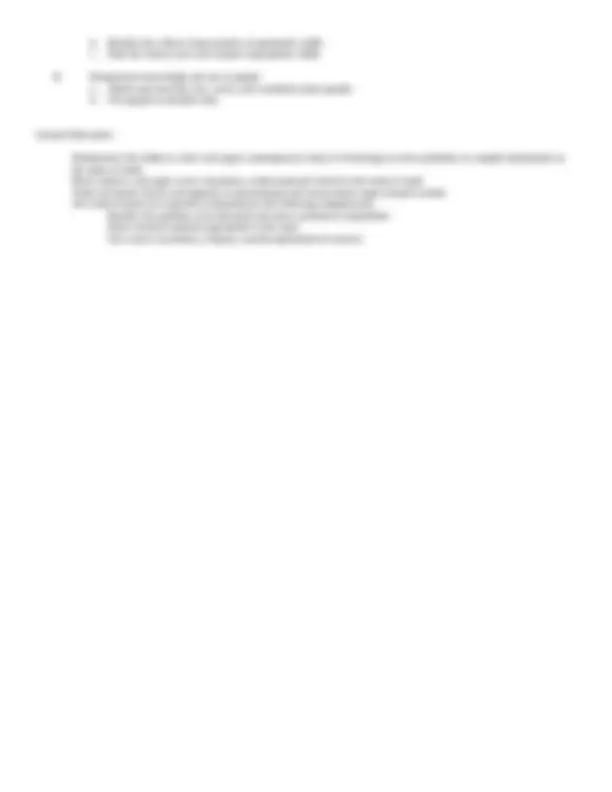



Study with the several resources on Docsity

Earn points by helping other students or get them with a premium plan


Prepare for your exams
Study with the several resources on Docsity

Earn points to download
Earn points by helping other students or get them with a premium plan
Community
Ask the community for help and clear up your study doubts
Discover the best universities in your country according to Docsity users
Free resources
Download our free guides on studying techniques, anxiety management strategies, and thesis advice from Docsity tutors
The learning outcomes and topics covered in mat 107: career math. The course focuses on ratios, proportions, and percents, unit measure, signed numbers, powers and scientific notation, algebraic operations, angles, triangles, circles and polygons, geometric solids, and graphs. Students will learn to identify and solve problems related to these topics, as well as apply contemporary forms of technology and communicate effectively.
Typology: Study notes
1 / 2

This page cannot be seen from the preview
Don't miss anything!


A. Demonstrate knowledge and use of ratios, proportions, and percents a. Write the comparison of two numbers by means of a ratio b. Write a ratio as a fraction, a decimal numeral or a unit ratio c. Solve a proportion d. Recognize, set up, and solve direct and indirect proportion applications e. Convert fractions and decimal numbers to percent numbers and vice versa f. Solve rate/base/percentage problems B. Demonstrate knowledge and use of unit measure a. Identify significant digits b. Identify which two numbers is more accurate or precise c. Round numbers off correctly depending on the accuracy or precision required d. Use dimensional analysis in problem solving C. Demonstrate knowledge and use of signed numbers a. Know and use the rules for adding, subtracting, multiplying, and dividing signed numbers b. Find the powers and roots of signed numbers c. Know and use the rules of order of operations in problems with signed numbers D. Demonstrate knowledge and use of powers of ten and scientific notation a. Convert to and from scientific notation b. Multiply, divide, and find powers of numbers in scientific notation E. Demonstrate knowledge and use of algebraic operations a. Recognize “like” terms b. Add and subtract like terms c. Multiply and divide monomials d. Apply the distributive law F. Demonstrate knowledge and use of elementary algebraic equations and formulas a. Check the solution of an equation b. Solve and check the linear equations, including those containing grouping symbols and fractions c. Evaluate and solve formulas G. Demonstrate knowledge and use of angles a. Recognize, draw, and/or define an acute angle, obtuse angle, right angle, and straight angle b. Recognize, draw, and/or define vertical, complementary, supplementary, alternate interior, alternate exterior, and corresponding angles. c. Change degree-minutes to degree-tenths and vice versa d. Add and subtract the measures of angles e. Solve angle problems H. Demonstrate knowledge and use of triangles a. Identify and draw acute, obtuse, isosceles, equilateral, and right triangles b. Use the Pythagorean Theorem to solve a right triangle c. Find the perimeter and area of a triangle d. Solve similar triangle problems I. Demonstrate knowledge and use of circles and polygons a. Identify squares, rectangles, parallelograms, and trapezoids b. Find the perimeter and area of a quadrilateral c. Identify regular pentagons, hexagons, and octagons d. Find the perimeter and area of regular polygons e. Identify diameter, radius, circumference, arc, and sector of a circle f. Find the circumference, area, arc length, and sector of a circle J. Demonstrate knowledge and use of geometric solids a. Describe and identify prisms, cylinders, pyramids, cones, and spheres
b. Identify the critical characteristics of geometric solids c. Find the surface area and volume of geometric solids K. Demonstrate knowledge and use of graphs a. Sketch and read line, bar, circle, and coordinate plane graphs b. Use graphs to interpret data General Education: Demonstrate the ability to select and apply contemporary forms of technology to solve problems or compile information in the study of math. Read, analyze, and apply to new situations, written material related to the study of math Write and speak clearly and logically in presentations and essays about topics related to math. All written reports are expected to demonstrate the following competencies: Identify the problem to be discussed and state a position or hypothesis Select research material appropriate to the topic Use correct vocabulary, formats, and documentation of sources.